One professor of geology drove his students into the wilderness of Montana so they could put lessons from textbooks to work evaluating government policy. A psychologist encouraged students to generate their own ideas for research, even if that meant he had to investigate pick-up lines to vet one of the projects.
Those professors and two others are being recognized for excellent teaching by the Carnegie Foundation for the Advancement of Teaching and the Council for Advancement and Support of Education.
The winners of the 2009 U.S. Professors of the Year awards each receive $5,000. They were evaluated on their dedication, their positive effects on students, and their ability to advance undergraduate teaching. Their approaches include getting students to teach one another and leveraging diversity among their students as a way of enriching class discussion.
The four winners are as follows:
Robert C. Thomas
professor of geology,
University of Montana-Western
For three and a half weeks in the fall of 2008, Robert Thomas woke up early to drive 15 students from Dillon, Mont., to an even more remote part of the state. Their quarry: one species of fish, the fluvial Arctic grayling, and its habitat. The professor and his students would pile out of a van and spend the next six hours evaluating stream shapes and flows, examining plant life, and figuring out what kinds of bugs were living in the stream.
That's how Mr. Thomas teaches about the intersection between the physical and biological world. He takes advantage of western Montana's natural surroundings to give his students hands-on experience in careers they might choose after graduating, such as land management and environmental consulting. The block scheduling system at Montana-Western, which requires students to take only one class for a few weeks at a time, makes this kind of teaching possible because students can leave the campus for the whole day to work in natural surroundings and don't have to worry about completing other course work when they return.
The class assessed efforts by the U.S. Fish and Wildlife Service to protect the grayling, whose numbers have been dwindling since the 1980s. When Mr. Thomas learned about the federal agency's plans, he saw a way to teach his students how to apply what they were learning in the lecture hall. The students collected data on the environment of the fish and submitted a 150-page report to the wildlife service at the end of the term.
Seeing his students gain a better understanding of the material made the hour-plus drive worth it, says Mr. Thomas.
"I have a hard time teaching them on labs that are just kind of standard canned labs because I'm not passionate about it. I don't find it interesting," he says.
Richard L. Miller
professor of psychology and department chair,
University of Nebraska at Kearney
A student in one of Richard Miller's classes proposed exploring how students' risk taking during spring break might be affected if they were prompted to think about consequences, specifically death. Ryan Mulligan, the student, surveyed 77 other students the day before spring break started, measuring whether they were risk takers or risk averse. He also asked some to spend a few minutes answering the question "What happens when you die?" After the break, Mr. Mulligan found that risk-taking participants were likely to engage in even riskier behavior after contemplating their own ends, while the risk-averse participants were less likely to engage in risky behavior. Some of Mr. Mulligan's research was eventually published in the journal Personality and Individual Differences.
Mr. Miller helps about a dozen students craft serious research projects each semester. The projects usually begin as curiosity about a particular issue, he says, and "my job is to turn that into a researchable question."
Students who initiate research, rather than simply assist faculty members on their projects, gain a better understanding of its value, Mr. Miller says. "We're trying to promote them understanding the process from the get-go."
Staying on top of students' interests can sometimes prove challenging, Mr. Miller says. One student wanted to research the effectiveness of different types of pick-up lines, so Mr. Miller read the literature on pick-up lines to see if the student's question could be turned into useful scholarship.
The effort is worth it, he says. Of the roughly 200 students he has advised in his 20 years at the University of Nebraska at Kearney, he estimates that at least 60 percent have presented their work at conferences or have had it published in journals.
Brian P. Coppola
professor of chemistry,
University of Michigan at Ann Arbor
For years, Brian Coppola has stood in front of hundreds of students and delivered organic-chemistry lectures. But once a week, he also sends out nine juniors and seniors to teach about 140 other students in small sections, where they present, discuss, and raise questions about original research they have selected from scientific journals, or otherwise engage with the challenging material at hand.
A studio art class he took as an undergraduate inspired Mr. Coppola's approach, which aims to give interested students a deeper understanding of the material they first learn about in the large lecture hall.
Participation in the small sections is voluntary. Students in the sections examine portions of the journal articles, doing further research to understand what the authors found. Then they write summaries of different aspects of the research, such as looking at the laboratory procedures the scientists used, translating the language of an academic journal into something a less specialized reader might understand.
Throughout the semester, the journal articles studied in the small sections are also used to teach all students in the course. Portions of the articles, as well as the student-produced summaries and explanations, are eventually published in a 250-page book and distributed to all of the students. For the final exam, students bring the book to class and are asked to evaluate different aspects of the research. For example, Mr. Coppola says, one exam question might instruct students: "There's a pretty severe mistake on Page 84. Why don't you figure out what it is?"
Students "often come to us with a black-and-white picture of science being a repository of truths," Mr. Coppola says, "as opposed to the idea that science is a constructed activity made of agreements and debates between people."
Students can best understand the fundamental rules of chemistry, he says, when they question what they're reading, rather than simply absorbing it and spitting it back out. The small sections provide a structure that encourage such inquiries.
Using data on grades of students in the class, going back several years, Mr. Coppola has found that students who participate in the voluntary sections usually get better grades than students who don't.
Tracey McKenzie
professor of sociology,
Collin County Community College (Texas)
Tracey McKenzie wants her students in her classes to see connections among academic disciplines. To highlight them, she has co-taught classes with instructors from computer science, statistics, Spanish, and political science.
It makes particular sense for her to teach across disciplines, Ms. McKenzie says, because sociology is about social problems, and some solutions to those problems are studied in other parts of academe. For example, Ms. McKenzie teaches a class on the power of the media with a political-science faculty member. The teachers ask students in the courses to analyze political propaganda and then create their own. Using political history to demonstrate ideas from sociology enriches students' understanding of both disciplines, she says.
For a class on sexuality, co-teaching with a political-science professor means the students examine the roles of women in politics, Ms. McKenzie says.
The diversity of students in her classes mirrors the diversity of disciplines that she has worked with. Working at a community college means students come with different levels of college readiness, from different ethnic backgrounds, and at different times in life. Ms. McKenzie says she has had students as young as 18 and as old as 76. That means they bring a range of experience that enriches class discussions, she says. "Whatever I'm talking about, there's always one student who's had that experience."


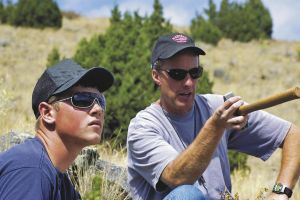

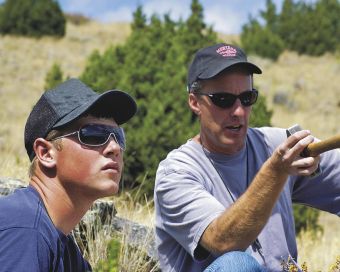
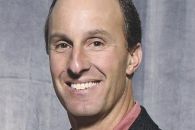
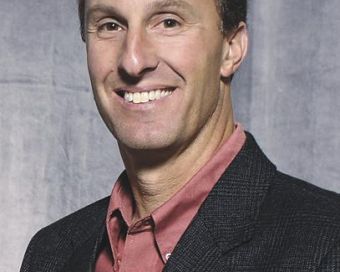

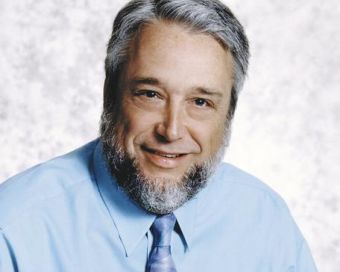

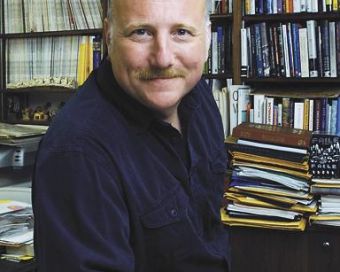

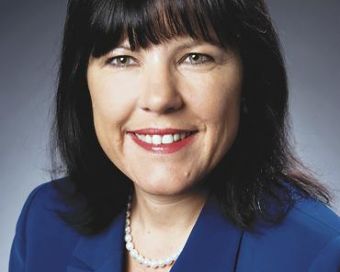






Comments
1. v8573254 - November 19, 2009 at 09:38 am
Observation: with one exception, these professors work in settings which are not flagship universities nor prestigious liberal arts colleges.
2. maugham - November 19, 2009 at 09:51 am
So? I'm not sure what your observation means. Is it that their institutions are more teaching centered, thus giving them resources, time and encouragement to be innovative or is there another point that I'm missing?
3. dabuchanan - November 19, 2009 at 10:03 am
What's most interesting is that many professors use these techniques and could have been one of the awardees. Sometimes we think our teaching techniques are common and nothing special -- who knew? Had you ever thought: What's so brilliant about that? I do that everyday.
4. swimdog - November 19, 2009 at 11:14 am
too bad the awardees don't represent more diversity.
5. llevitt1 - November 19, 2009 at 11:24 am
Three white guys and one white woman; Preservation of the status quo. As to their accomplishments: Been there, done that. How does Carnegie choose the candidates? Just as there are larger, more prestigious institutions to comb through, so are there small, sometimes sectarian private institutions whose faculty are busy doing great teaching unsung for their efforts.
6. browng8 - November 19, 2009 at 02:02 pm
Congratulations to the winners and the important work they are doing. There are many of us who are appreciative of the great work they and many like them are doing.
7. latino - November 19, 2009 at 02:06 pm
Interesting, just one woman.
8. truelee - November 19, 2009 at 10:07 pm
Yes, congrats to the winners and thanks to the Carnegie for honoring educators and education.
9. cheryl_university - November 20, 2009 at 10:57 am
I agree with browng8 and truelee...the winners deserve to be congratulated.
10. drrom - November 20, 2009 at 11:49 am
Interesting that they are all in some form of the sciences.
11. rstorey - November 23, 2009 at 02:21 am
These outstadning teachers are among the finest we have and all inspire studnts to new hights of learning, scholorship and achievement. Kudos to all national and state winners.
12. willynilly - November 24, 2009 at 11:26 am
Frankly, I don't care for these kinds of awards. I realize, however, that they are a part of the landscape of higher education. But, in reality the granting of rewards and/or special recognition is more symbolic of the efforts of certain peripheral higher education groups, to garner for themselves, some of the positive glow that emanates from America's finest teachers. I'm sure most readers realize that these four are not "thee" best. There are hundreds, if not thousands more across america, who are equal to or exceed these four in teaching quality.
13. lwfieseler - November 25, 2009 at 11:43 am
After reading the article my sentiments are that that all of these educators deserve credit for their efforts in seeking diverse avenues of learning, although perhaps not unique. That is the essence of awards such as these. To the benefit of the students engaged.
Unfortunately it seems humankind ( to be politically correct, which of course we must, especially in academia !?) is bent on finding their negative 'voice' and utilize churlish comments of racial and sexist nature(s).
This is the twenty - first century people. Wake up tomorow to a world where your agenda of prejudicial thought is clear and your cerebrum will feel oh so much relieved of the congestion of racial and sexist bias.